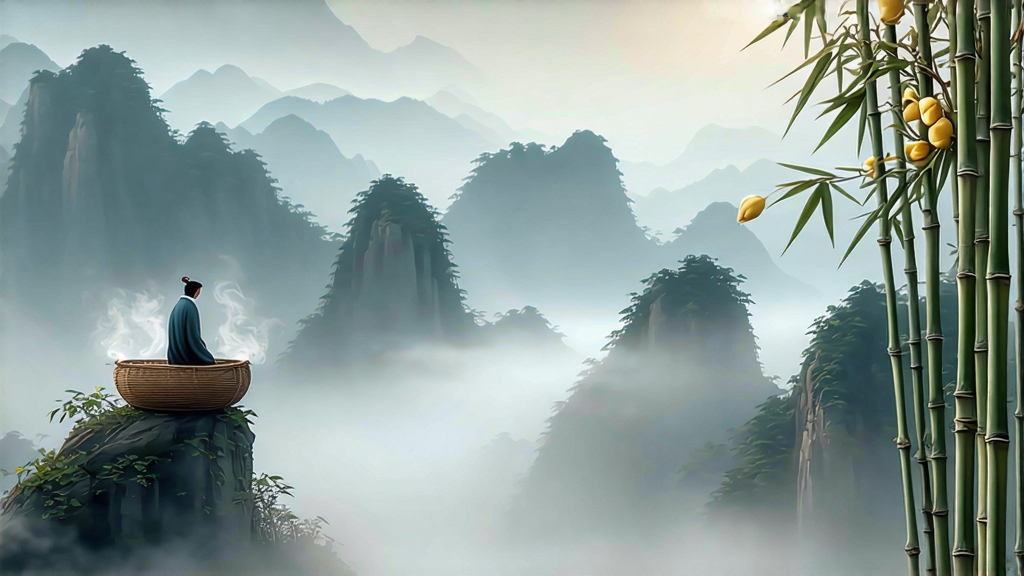
Tucked high in the western Dabie Mountains of Anhui province, where morning clouds coil around granite peaks like dragon’s breath, a tiny yellow bud has been quietly seducing emperors, poets and modern sommeliers for more than seven centuries. Meet Huoshan Huangya, the most aristocratic yet least flamboyant member of China’s micro-category of yellow teas—so rare that even inside China only a few hundred kilograms reach the market each spring, and so nuanced that a single sip can feel like drinking the mountain’s own perfume.
A Brief, Regal History
The first written record appears in 1495, when the Ming Dynasty’s Ministry of Rites listed “Huoshan Yellow Sprout” among the 42 tribute teas demanded by the imperial court. Legend claims that when the Wanli Emperor (r. 1572-1620) tasted the liquor—pale gold, softly sweet, with a whisper of orchid—he declared it “the colour of the rising sun and the taste of a quiet heart.” Thereafter every harvest was escorted to Beijing under military guard, packed in tin-lined chests lined with camphor leaves to keep the buds unbroken. During the Qing, the tea vanished from palace menus when mountain orchards were torched in the 1850s Taiping rebellions; it was not until 1972 that a team of agronomists, guided by an 84-year-old monk who remembered the old picking songs, rediscovered wild mother trees hidden behind a waterfall. Cuttings were taken, grafted onto drought-resistant rootstock, and today the entire modern gene pool descends from just 17 trees.
Micro-Terroir, Macro-Character
Huoshan county enjoys a perfect storm of yellow-tea conditions: 1,200 m elevation, 88 % humidity, mean spring temperature of 14 °C, and acidic granite soil laced with quartz. The fog refracts light, slowing photosynthesis and stacking amino acids—especially L-theanine—in the tender leaf. Local lore divides the growing zone into three belts: “Heaven above the clouds” (above 1,000 m, buds yield jasmine and stone-fruit notes), “Earth between the rocks” (600-1,000 m, chestnut and sesame), and “Man along the river” (below 600 m, greener, more astringent). Only the heaven belt is accepted for tribute-grade Huangya.
The Picking Code
Harvest lasts exactly 20 days, beginning when the night-time temperature stays above 8 °C and the local azalea bursts into pink. Pickers—mostly women wearing bamboo hats—pluck only the “flag-and-one-leaf”: a tight unopened bud cradled by a half-expanded leaf no longer than 2.5 cm. The ideal weight is 0.12 g per pick; 46,000 such picks yield one kilogram of finished tea. Baskets are woven from fresh bamboo so that no foreign odour intrudes; leaves must reach the village workshop within two hours before enzymatic oxidation races ahead of the tea master’s plan.
The Secret of Menhuang—“Sealing the Yellow”
What lifts Huoshan Huangya from green-tea status is the menhuang (闷黄) step, a controlled humid rest that nudges the leaf into a gentle, non-enzymatic oxidation. Immediately after fixation in 160 °C woks—hand-tossed for 4 minutes until a popping sound like sesame seeds is heard—the leaves are piled 8 cm deep inside oak boxes lined with wet cotton. For the next 48 hours the tea master hovers, maintaining 65 % humidity and 32 °C, turning the pile every 90 minutes to distribute heat. Chlorophyll degrades into pheophytin, catechins dimerise, and a golden pigment called theaflavin-3’-gallate forms, gifting the liquor its luminous apricot hue. The process is stopped the moment the leaf edge turns ivory; wait too long and the tea slips into black-tea territory.
Roasting in Bamboo Sleeves
While still warm, the leaf is rolled into tight spindles and given three consecutive roast-dry cycles inside narrow bamboo tubes (hongbei, 烘焙). A charcoal fire of local chestnut wood is banked to 70 °C; the tubes are rotated every 30 seconds so that each bud tumbles like clothes in a gentle dryer. The bamboo imparts a faint